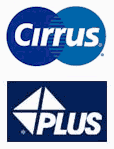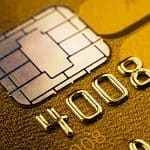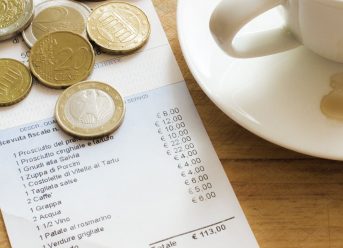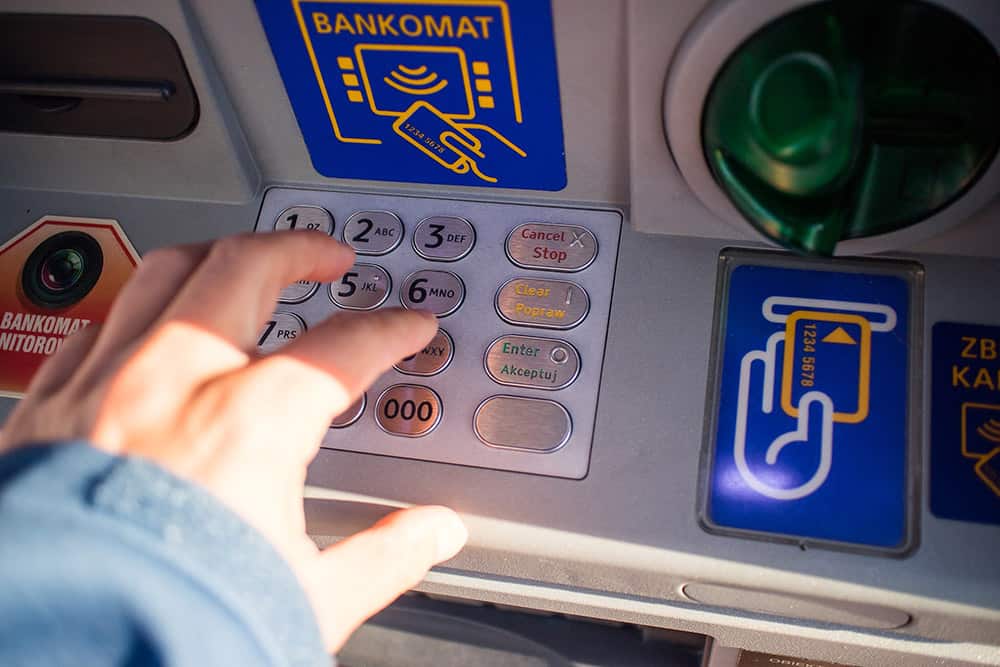
[Updated: January 24, 2018. Originally Posted: October 2011.]
You’ll save yourself a lot of headaches by understanding the best ways to use your money in Europe. This guide will explain how to get access to your cash and the best ways to purchase goods and services.
The Basics
Currency: The Euro is the most prevalent currency in Europe, but there are still a few countries that use their own currency. These unfamiliar currencies can be a little confusing. Small bills (1€/2€ and £1/£2) have been replaced by coins, so don’t be surprised when you get a bunch of coins back.
- The Euro: The Euro is currently used in:
Austria // Belgium // Cyprus // Estonia // Finland // France // Germany // Greece // Ireland // Italy // Kosovo // Latvia // Lithuania // Luxembourg // Malta // Montenegro // Netherlands // Portugal // Slovakia // Slovenia // Spain. It’s also used in Andorra, Monaco, San Marino and the Vatican City
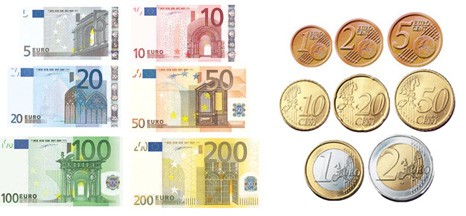
- The British Pound Sterling: The Pound is used in the United Kingdom (England, Wales, Scotland and Northern Ireland).
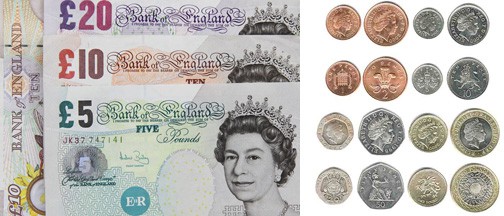
- Other Countries That Don’t Use The Euro:
Iceland // Norway // Russia // Belarus // Ukraine // Moldova // Sweden // Denmark // Poland // Latvia // Lithuania // Czech Republic // Hungary // Romania // Bulgaria // Switzerland // Liechtenstein // Albania // Serbia // Croatia // FYR Macedonia // Bosnia-Herzegovina
Exchange Rates: The exchange rate is a way to show how much one currency is worth in terms of the other. The rates change daily (although in tiny increments). You want to make sure you know the current exchange rate so you’re aware of what you’re spending. It is pretty simple with the Euro, Pound and Swiss Franc but it gets more confusing in Eastern Europe because each country uses their own currency and the number values on bills are very high.
For example, in Hungary, 5,731 HUF = about $20. This doesn’t mean that you can live like a king. It just means that you can buy a souvenir t-shirt for about 5,731 HUF. It can be pretty startling when your bottle of coke rings up as 1000 HUF. Conversely, that £3 bottle of coke in England is costing you about $4.50. Make sure you know how much you are paying in your own currency.
As of early 2018, the Euro to the US dollar is currently around 1 : 1.25 (This means 1€ = $1.25). So when you buy something in Euros you should multiply the amount by 1.25. For example, a 10€ meal costs you $12.50.
Exchange rates change all the time so be sure to write down the current rate before your trip. I use xe.com to find the current exchange rates. There are multiple smartphone apps that will also show you the current exchange rate.
The Mighty ATM – The Best Way To Get Cash
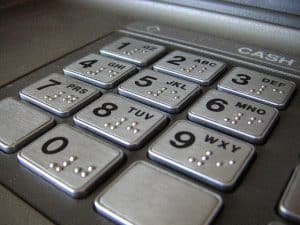
The ATM is easily the best way to get cash. There are ATMs everywhere in Europe (airports, train stations, scattered across cities, etc). Pretty much every ATM has an English language option so you don’t have to worry about knowing the local language. You will also be given the exact current exchange rate (money change offices often give you a bad conversion rate).
You’ll still want to be aware of a few things:
- Use A Debit Card: You do not want to use your credit card at the ATM. Using a credit card will be treated as a “cash advance” and you will be hit with huge fees. Make sure you only use an ATM or debit card.
- 4 Digit PIN Code: Your ATM card has to have a 4 digit numerical PIN code. European machines won’t accept longer numbers. Unlike American keypads, European pads don’t have letters on them so make sure you know your number.
 Have The Right Kind Of Card: Make sure your debit card/credit cards have the cirrus or plus logo on them (pretty much every Visa or MasterCard will have one). Cards with this logo will pretty much work all over Europe.
Have The Right Kind Of Card: Make sure your debit card/credit cards have the cirrus or plus logo on them (pretty much every Visa or MasterCard will have one). Cards with this logo will pretty much work all over Europe.- Bank Fees: Your bank probably charges a fee when you use another bank’s ATM — this applies to international ATMs too. The fees will either be a flat fee (usually between $1-$5) and/or a small percentage of the withdraw (1-2%).
- If your bank charges a flat fee it is wiser to withdraw large chunks at a time. This way you’ll reduce these extra fees.
- Members of Bank of America (USA), Barclays (United Kingdom), BNP Paribas (France), China Construction Bank (China), Deutsche Bank (Germany), Scotiabank (Canada) and Westpac (Australia and New Zealand) can use each others ATMs without being charged transaction fees.
- Check your local bank’s policies so you know.
- ATM Cards To Consider (be sure to check with your bank to double check the terms):
- Capital One: No currency conversion charge and $1.50 per ATM transaction.
- Citibank: 2% currency conversion charge and $1.50 per ATM transaction.
- Bank of America: 1% currency conversion charge and $5 per ATM transaction (if you don’t use one of the banks listed above.)
- Have A Backup Card: Every time I put my card into an ATM I had the sinking feeling that it would eat my card. I never had any problems, but card eating machines are not unheard of. If it does get eaten cancel the card ASAP. Some machines are tampered with so they eat your card and then thieves come get it after you leave.
- Big Bills Are A Hassle: That great little crepe stand won’t take your 100€ note for a 3.50€ crepe. Try to withdraw uncommon amounts so you’ll get smaller bills. If you withdraw 200€ you’re likely to get two 100€ notes. So withdraw 190€ so you’ll get some smaller bills. If the ATM won’t give you the amount you want, you can always go into the bank and they’ll exchange for smaller bills.
- Check Your Withdrawal Limits: Some banks put a daily limit on how much cash you can withdraw. Sometimes the ATM limits how much you can withdraw. If you’re on a budget you probably won’t reach this limit, but it is good to keep in mind. You can also sometimes request to have your withdrawal limits raised.
- Know The Lingo: If you ask for an ATM you might get a blank stare. Each country calls it something different — cashpoints in the UK, a distributeur in France, etc.
- Stick To Bank ATMs: There are a decent amount of third party ATMs that aren’t affiliated with banks. I would avoid these because they might charge higher fees. I recommend just sticking to ATMs that are owned by major banks.
- Security: Be aware when you’re using the ATM. Make sure people are not looking over your shoulder and use your hand to cover up the keypad when keying in your PIN. If there is a shady character hanging out near the ATM it is probably best to look for another one. It something about the machine seems weird we recommend finding a different one.
Using Your Credit Card/ Debit Card For Making Purchases
Most European businesses take credit/debit cards, but there are still a few smaller places that only take cash.
- Call Your Credit Card Company Before You Leave: You need to inform your bank that you’ll be using your card in Europe. If you don’t tell them, they’ll probably put your account on hold because they’ll assume the charges are fraudulent.
- Bring A Few Credit Cards: If a card gets stolen you can just use one of your other cards. Just don’t carry all your cards in the same wallet/bag.
- Always Use A Credit Card/Cash When Making Purchases: It is very easy to copy (aka clone) a credit/debit card. All the thief (usually a waiter or a shopkeeper) needs to do is swipe your card with a special card reader and it copies all the information off the magnetic strip. The info can then be copied onto a blank card or saved on a computer to be used later. They can then rack up tons of charges without you even knowing.
- With a credit card, it is much easier to dispute these charges, close the account, and use another card.
- Your debit card is tied right to your checking account. The money is gone as soon as the card is used. A thief can easily drain your account (usually racking up tons of overdraft fees in the process) and it is much harder to reverse the charges. It can take weeks to get your money back. Also, if your Debit card gets canceled then you’ll have no way to get money from an ATM — so only use it at ATMs.
- Get A Card With No Foreign Currency Conversion Fee: All these little fees can add up. I believe Capital One doesn’t charge a fee and some others might as well. Check with your bank.

 Not Everywhere Accepts American Cards: Much of Western Europe is now using Chip-and-PIN cards. These cards have a little magical microchip in them. Most places can still swipe your card if you don’t have a chip (you might have to be persistent), but you could run into problems at self-service machines. You probably won’t be able to use your card at the ticket machines at train/subway stations (you can still go to the ticket window), bike rental stations, self-serve gas stations, etc. There have also been reports of American cards being rejected multiple times before it is accepted (not really sure why). Make sure you carry extra cash. NOTE: Many American banks are switching over to Chip-and-PIN technology so enquire about getting one of these cards before your trip.
Not Everywhere Accepts American Cards: Much of Western Europe is now using Chip-and-PIN cards. These cards have a little magical microchip in them. Most places can still swipe your card if you don’t have a chip (you might have to be persistent), but you could run into problems at self-service machines. You probably won’t be able to use your card at the ticket machines at train/subway stations (you can still go to the ticket window), bike rental stations, self-serve gas stations, etc. There have also been reports of American cards being rejected multiple times before it is accepted (not really sure why). Make sure you carry extra cash. NOTE: Many American banks are switching over to Chip-and-PIN technology so enquire about getting one of these cards before your trip.- Always Pay In The Local Currency: Some places will ask if you want to be billed in US dollars (or whatever your home currency is). This sounds like a good deal but it is a total rip-off. You’ll usually be charged 5%-7% more for this “convenience.” Some merchants will do this for you (without asking first) so be sure to check your receipts for anything that references your native currency. Tell them to redo the transaction if this happens.
- Cash Is King: Always have some cash with you. Some places only accept cash. One time I was in Bruges and for whatever reason, none of the ATMs would take foreign cards. All us Americans, Brits, and Aussies were standing around scratching our heads. The cheap food places wouldn’t take credit cards. I ended up eating at a Pizza Hut… don’t let this happen to you (I got pineapple and pepperoni – in case you were wondering).
- Surcharges: Some places charge an extra 2-3% if you use a card. I think this is technically against their contract, but it doesn’t really stop them.
Other Ways To Get Money & Make Purchases
Pre-Paid Debit Cards: Pre-paid cards are becoming more popular, but I don’t recommend them. There are multiple extra fees — You have to buy the card, pay to add money to the card, fees for canceling and cashing out your card. Then there are usually fees for just using your card. You should read the terms closely before you choose this option. One nice thing is that someone back home can add money to the card (although you can do this with debit cards too), so it might be useful in emergencies.
Travelers Cheques/Travelers Checks: Travelers Cheques are kind of a hassle these days and not many people really use them. It can be difficult finding a place that will accept them. They might be fine as a backup payment method, but they are impractical for frequent use.
The Ol’ Greenback: A CRISP $100 bill is still a welcome sight in Europe so it doesn’t hurt to carry one or two around for emergencies. No shop or restaurant will accept them but there are plenty of money exchange offices in any European city. You can always just deposit the money back into your account if you don’t use them.
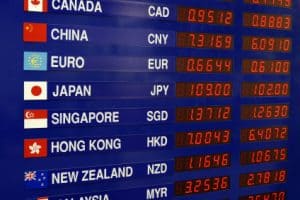 Money Exchange Offices: Every major airport and train station will have a currency exchange booth/office. You “sell” your currency and they’ll exchange it for the local currency. These places charge a commission and the exchange rates are always in their favor.
Money Exchange Offices: Every major airport and train station will have a currency exchange booth/office. You “sell” your currency and they’ll exchange it for the local currency. These places charge a commission and the exchange rates are always in their favor.
- Try to avoid changing money at the airport/train station. You’ll get the worst rates here. If you can, look for exchange offices or local banks in the city.
- I’ve always tried to avoid currency exchange offices that look sketchy. You’ll see many. Just use your spidey sense.
- Never change your money on the street. A “helpful” local will offer to do it for you but there is a 100% chance you’re getting ripped off. They’ll often use slight of hand and confusion to replace large bills with small denomination bills.
- Always count the money before you leave the exchange office — some might “forget” to give you the correct amount.
- Guide To Using Smartphones, SIM Cards, and Data Plans In Europe - August 2, 2025
- Backpacking Europe Packing List — My Europe Travel Packing Guide - July 26, 2025
- The Best Travel Backpacks | In-Depth Buyer’s Guide & Backpack Reviews - July 5, 2025

No Funny Business
The Savvy Backpacker is reader-supported. That means when you buy products/services through links on the site, I may earn an affiliate commission—it doesn’t cost you anything extra and it helps support the site.
Thanks For Reading! — James
Questions? Learn more about our Strict Advertising Policy and How To Support Us.


